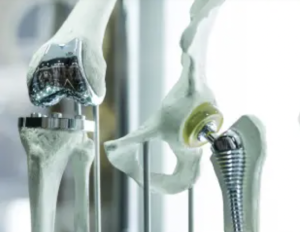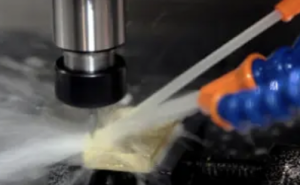When you want to create a new part, there are two manufacturing methods you can turn to: CNC machining and 3D printing. Although both processes are standard today, each has evolved to meet different demands — so it’s important to know which method will best suit your needs.
3D printing is additive manufacturing are of great use in the medical field, where they can create organs, prosthetics and implants. The food industry has also made use of this technology, producing foods by squeezing them out layer by layer. Artists regularly use it to produce artwork, and fashion designers use it to create their apparel and jewelry.

Computer numerical control (CNC) is a common type of subtractive manufacturing, meaning it carves out needed components from large blocks of material. CNC machining can produce parts that are strong and have precise dimensions. It tends to be best for engines, airplane machinery and other fields where robust parts are needed. It is common in industries such as woodworking, lettering and engraving

Key Differences Between 3D Printing and CNC Machining
There are also several major factors that differentiate the two processes.
1.Wastefulness
One of the main differences in additive vs. subtractive manufacturing is the amount of waste they produce. Because CNC machining takes away material, it ends up producing a lot of waste that is impossible to recycle. As you can imagine, the cleanup tends to be messy. 3D printers, however, only use the precise amount of material necessary to produce the part so no cleanup is necessary afterward. 3D printers also produce less noise, as they don’t vibrate during production.
2. Size of Parts
With CNC milling, you can make a broad range of different size parts. In 3D printing, on the other hand, the parts you make cannot be any larger than the printing bed. You can produce large components with a 3D printer, but it would involve breaking the component into smaller parts, printing those parts separately and then assembling them. Needless to say, this adds a large amount of time to the production process.
3.Material Availability
CNC manufacturing can work with a wide range of materials, such as metal alloys, wood, acrylics, modeling foam and thermoplastics. 3D printers, in contrast, work with a more limited number of materials, using primarily plastics, metals and polymers. They cannot work with metals with high melting points. In addition to accommodating many materials, CNC machines are also easy to adapt to use new materials. A 3D printer, on the other hand, can only work with one material.
4.Speed
Another key difference between CNC and additive manufacturing is the speed. When it comes to mass-producing a product, CNC machining is faster because it involves an assembly line of machines producing each part. A single 3D printer makes the entire product from start to finish, which makes it less suitable for large-scale production.
5.Production
CNC machining is more precise, providing accuracy to the nearest micrometer. That is because CNC machines have a higher tolerance capability. 3D printing is still far from achieving this level of precision.
6.Repeatability
CNC machines can consistently produce a product the same way each time.
7.Quality
Because of their higher tolerance, CNC machines can produce products with a more polished look. The materials don’t get deformed during manufacturing. Parts made by 3D printers, however, tend to bend and warp, and layer lines can be visible, especially around curves. Although some 3D printers do promise a high degree of accuracy, they still mange to fail at times. Both manufacturing methods have geometric limitations. CNC, for instance, can produce very thin walls, but 3D printing has limitations in this regard, and the size of its end-effector often determines its ability.
Key Similarities Between 3D Printing and CNC Machining
CNC machining and 3D printing have a few basic things in common:
1.They make 3D products based on 3D models.
2.They do so by following instructions from a computer.
3.They are at the forefront of technology.
4.They are common today.
Beyond these basic similarities, however, CNC machining and 3D printing satisfy largely different demands and offer different benefits.
Although CNC and 3D printing do meet different, in the vast majority of cases, CNC is the cheaper, faster and higher-quality method for manufacturing your parts. if you have any CNC machining project, please feel free to contact: joyce@beisi-rapid.com for your part today.
